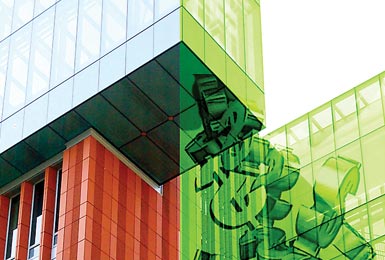Integrating Sustainability into the Capital Planning Process
Company management should evaluate and prioritize green options while remaining aligned with their organization's overall business mission.
November 2010

The many potential greening initiatives a company can undertake compete with a myriad of other capital and operational investments. These include systems renewal, building renovations, and new construction. While companies may analyze opportunities to improve building sustainability, ultimately these investments will need to be assessed in relation to other building requirements.
Short- and Long-Term Deliverables
Companies that are just beginning the process of integrating green programs into their capital plans may choose to initially focus on relatively low-cost initiatives. These can deliver short-term paybacks by reducing energy and natural resource consumption - with the priority based on cost savings and other desired benefits.
As these firms make progress, and see results, they may go on to evaluate sustainability opportunities that can provide both short- and long-term environmental, social, and economic benefits. Such assessments may be conducted in support of major building renovations, large-scale master planning programs, or the acquisition of a long-term property holding.
By combining this information with detailed data about overall requirements across a building portfolio, companies can get a holistic view of facility needs - allowing them to improve operational conditions and maximize efficiency, while promoting a sustainable built environment. Finding this data and making these decisions can be a daunting task, but here are a few simple steps to follow when considering facility and sustainability upgrades.
Questions to Ask
The first step in identifying the best investment strategy for sustainability is an objective evaluation of a company's current state of sustainability and its options for change - including estimated costs and potential benefits. Company management should determine the answers to several questions before establishing a sustainability framework.
First and foremost, what are the company's strategic business goals and real estate objectives, and what is its corresponding sustainability commitment? Is there a balance between them? Basically, where does the company want to be in terms of sustainability while staying within its corporate agenda? It is important to remember sustainability is not a "one size fits all" process. Different organizations will have very different approaches to sustainability.
When deciding on corporate or sustainability initiatives, keep in mind that reaching the highest level of green performance or energy efficiency is most cost-effective when timed to coincide with new construction, renovation, or major infrastructure renewal. Also, the savings are greatest when improvements are made when systems are as close as possible to the end of their useful lives.
Once the company's objectives are decided, it is time to determine the starting point, i.e., what types of assets and equipment are already in place? Where can sustainability be improved easily? And where is the most work needed?
There are many factors to consider when determining the starting point of a sustainability plan. Climate can affect sustainability drastically; those in warmer climates will need to consider cooling systems, while those in colder climates will focus on heating. Other aspects of climate such as annual rainfall and cloud cover can also determine the type of sustainable technology that is best for a particular facility.
Project Announcements
Australia-Based Aquatic Leisure Technologies Group Plans Opp, Alabama, Manufacturing Operations
12/11/2025
Teradyne Plans Wixom, Michigan, Robotics Operations
12/11/2025
Robinson Plans Altoona, Iowa, Manufacturing Operations
12/11/2025
BioTouch Expands Columbus, Georgia, Operations
12/11/2025
Natrion Plans Erie County, New York, Battery Components Operations
12/11/2025
Czech-Based GZ PrintPak Expands Mount Pleasant, Wisconsin, Manufacturing Operations
12/11/2025
Most Read
-
The Workforce Bottleneck in America’s Manufacturing Revival
Q4 2025
-
Rethinking Local Governments Through Consolidation and Choice
Q3 2025
-
First Person: Filter King’s Expansion Playbook
Q3 2025
-
Lead with Facts, Land the Deal
Q3 2025
-
How Canada Stays Competitive
Q3 2025
-
Investors Seek Shelter in Food-Focused Real Estate
Q3 2025
-
America’s Aerospace Reboot
Q3 2025